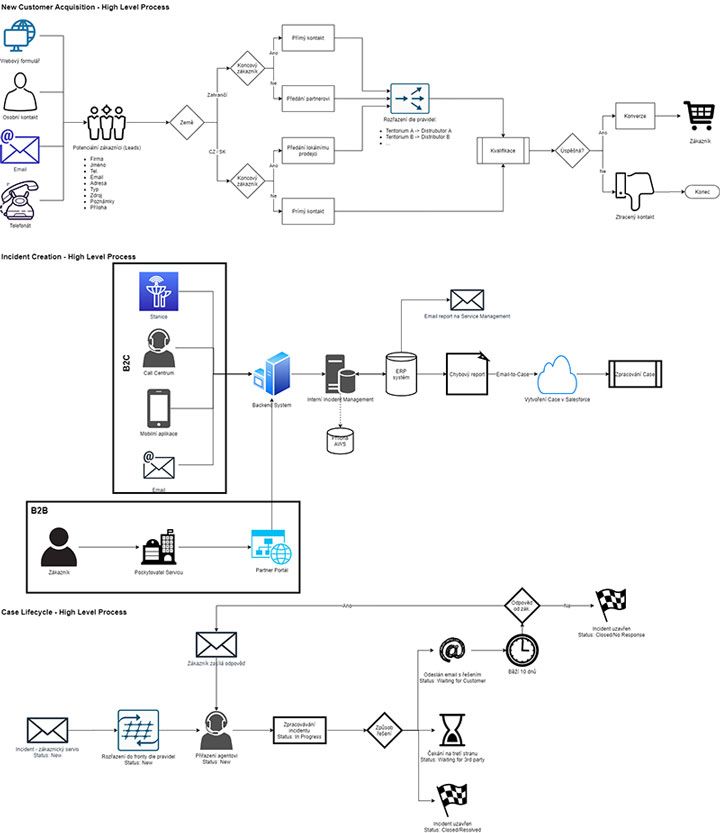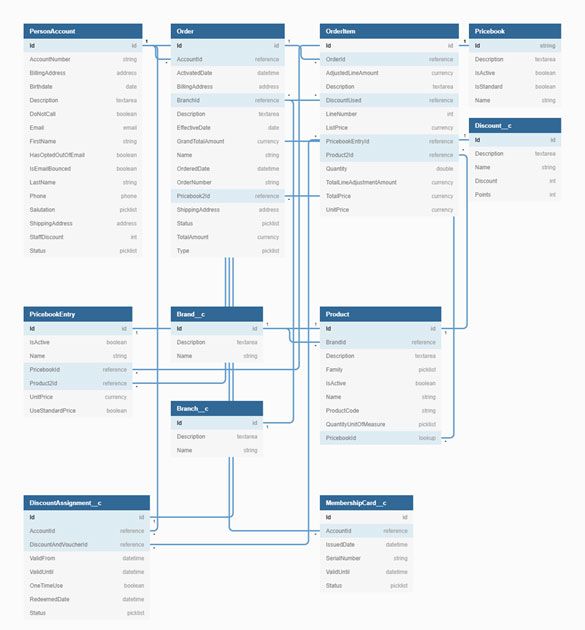The role of Business Analysis
How to make the most out of successful CRM implementation

Customer Relationship Management software, or CRM for short, is an indispensable tool that enables business growth in the digital age. This is attested to by the fact that CRM is one of the fastest-growing enterprise systems in current business environment. How do we make the most out of its implementation? And how do we start?
Practice makes perfect. This applies to implementation projects as well. A thorough analysis is a crucial component that enables us to follow with a successful implementation project. What does business analysis entail, what is the role of a Business Analyst, and why is this implementation stage so important?
Business Analysis: What's it all about
Business analysis is often used as an umbrella term for mere aggregation of requirements and for a metaphorical bridge that connects business users and development teams. In reality, business analysis however encompasses a much broader spectrum of activities. Experts from different departments of a particular business meet with experts on system implementation to discuss the current situation and the processes of the company undergoing the analysis. After evaluating them, they recommend a solution to improve them or make them more efficient using a suitable CRM implementation. The topic of user adoption absolutely needs to be talked over during this early implementation stage. User adoption is key to successful launch of the system.
The process of business analysis and CRM implementation proposal is largely similar regardless of the industry or the specific CRM system. Let's have a look on the stages that we typically go through in a successful implementation process. Depending on the size of the business and the complexity of the project, these stages may take shorter or longer.
Identifying the key requirements
Usually the analysis begins with a talk with the company management. In this talk, we define the key requirements and critical success factors. They are often formulated as "The project will be success when …" Critical success factors are targets that the project is following from the beginning to the end. During the proposal stage, they help decide whether a project component should be included in scope or kept out of scope. At the conclusion of the project, these factors are used to determine its success. We recommend identifying both short-term and long-term factors. They will be used to develop the system further.
Identifying the stakeholders
Stakeholders are persons responsible for selecting the system and subsequently for its users as well. At this stage, the main client-side stakeholders are typically the project sponsor, the project manager, and the key end users of the CRM system. On the implementer's side, the key roles are the business analyst and the project manager. In some cases of complex implementation or integration of CRM with third-party systems (e.g. ERP or CMS systems), the role of the technical architect is indispensable.

Defining the implementation scope
The best way to understand the scope is from the point of view of the individual teams and processes. Typically, we ask the following questions to make a qualified determination of the scope: "Which teams will be using the new CRM platform?", "Which processes will be supported by the new CRM system?", or "What are the pain points of these processes at the current time?" We have to consider not only the processes that begin and terminate within the CRM, but also more extensive processes where the part which resides in the CRM is merely a sub-process.
During this stage, we already collect the functional and technical requirements for the new system. The output of this activity helps us define the scope and stage the implementation based on what the system needs to be able to achieve in the short term, and which functionalities we expect in the long run.
Mapping the current state of the processes
We now have a high-level, or organizational-level view of the implementation. This enables us to go deeper in the detail. We also involve operational roles within the organization that will use the system or that will be impacted by its implementation. Together with the users, we map the processes they go through on a daily basis. We carefully watch and document the individual steps so that we capture all potential user functionalities. We can often see that the users enter data using diverse tools such as an Excel sheet or other apps that seemingly do not integrate. These situations, or steps, need to be documented thoroughly. We also actively enquire how the system or process could be made more efficient from the users' point of view. Users' feedback is key for any potential improvement. The output of this stage is a complex view of the current state of things and an extensive list of implementation requirements.
Data flows
Understanding specific data elements and data flows that support the processes is an integral part of mapping the current status in the previous stage. We identify which data the organization works with, in what systems the data is located, and how it needs to be handled in the CRM system. It may be information on potential or existing customers, contracts, business opportunities, customer communication, or a calendar. In this stage, we also specify how to handle the existing data set after the implementation of the new CRM system. Will the data be imported? Which data, and how far back in time? What is the volume of this data? What export options are there in the existing systems? Can the data be cleaned up and stripped of duplicates so we can guarantee the highest possible data quality?

Future solution proposal
In this stage, we propose the future solution based on the requirements that we collected, and on our knowledge of the current status. We discuss and apply process efficiencies and refinements. We eliminate unnecessary or error-prone steps. We offer automation for manual processes that can be automated. We design the system in a way that it respects the efficiency of the centralized information and providing the right information at the right time so that the users of the system can make informed decisions.
The outputs of this stage are principally:
- Data model of the CRM system (how the individual objects are connected)
- CRM object configuration proposal (how the records are stored, which data is available, and how they show to the end user)
- Security model (who can access which data, and under which conditions)
- Business process configuration
- Reporting configuration
- Integration and custom development (i.e., anything that is not available through system configuration)
- Data migration plan
- Comprehensive implementation proposal
User adoption
Long-term statistics show that sufficient user adoption has to go hand-in-hand with high-quality technical implementation of the system. Underestimating the user adoption is the cause of more than 50 % of unsuccessful CRM system implementations. From a technical standpoint, making a system go live is fairly easy. The challenge consists of the human aspect and ensuring that the users actually use the new system. It is quite common that the business analyst role also entails the role of a specialist on implementation strategy to increase the user adoption rate and change management. Often it is not enough to perceive user adoption as an activity that takes place at the end of the implementation. Quite the opposite: in a well-managed project, it is considered from the very beginning when it is necessary to ensure that all the stakeholders are motivated, communication is planned efficiently and feedback is collected and acted upon at all times.
This article was originally published in Czech by SystemOnline.cz




